Competency Framework Example
Incorporating competency evaluation into your performance appraisals will ensure that each team member is exhibiting the values and beliefs of the organization in their day-to-day work.
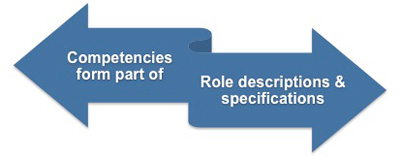 |
These competencies form part of the role description and you will need to familiarize yourself with how your organization defines them. You should be aware that there is no universally accepted definition for a competency. Most organizations will have their own particular definitions and you will need to study these as they are unlikely to be the same as those you have used elsewhere.
A competency can be characterized as:
A set of defined behaviors that provide a structured guide enabling the identification, evaluation, and development of the behaviors in individual employees.
Most organizations have developed their own competency framework that details the competencies expected of someone operating at each particular level within it. Some of these are seen as 'core' competencies and are required by everyone within the organization, whereas others are relevant to particular roles or levels of responsibility. For example, competencies such as 'Strategic Thinking' may only be appropriate to a particular level or function.
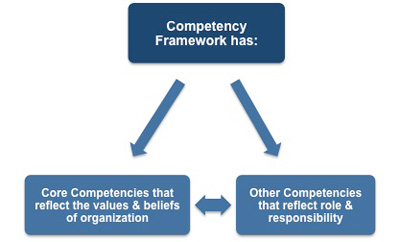 |
All of these competencies together with their associated behaviors form an organization's competency framework, which is made up of both functional and behavioral components.
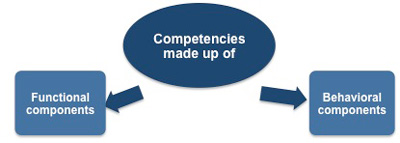 |
Functional components are the technical things that are specific to the job. For example,
Telephone sales team leader must have a detailed knowledge of the telephony system so they can monitor their team in real-time and produce daily performance reports for each member.
Project manager needs to have a comprehensive knowledge of the latest version of the 'Microsoft Project' project management software.
Behavioral components - are the soft skills that make a person successful in their role and are more universal in nature across a wide range of roles. For example,
Both the telephone sales team leader and the project manager need to portray good communication skills when dealing with their teams and others.
The importance placed on the functional and behavioral components of each competency will reflect the culture and values of the organization. Remember, competencies are the aggregate behaviors needed for an individual to perform their role and they relate to how people deliver objectives rather than to what the objectives are.
You should be able to identify a list of these in each of the job descriptions of your individual team members. For example,
A sales person needs to display team-working competency so that orders are fulfilled as promised. They also need to be customer focused and consider the customer's long-term needs, so that the customer continues to return to the organization for future services, not just the initial purchase.
Every organization has different priorities and each will have its own competency framework. However, a typical framework might look like this:
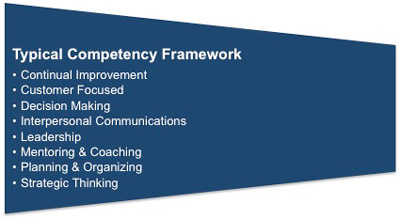 |
For each of these competencies the organization's human resources department will hold a definition that is pertinent to each role level.
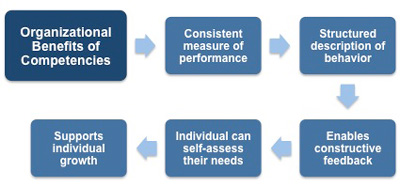 |
There are several benefits of incorporating a competency framework into performance management procedures.
Competencies provide an organization with:
- A consistent measure of performance, making it easier to be objective when assessing and monitoring it.
- A structured way of describing behavior - a common language for the organization.
- An effective tool to help managers give constructive feedback, since competencies provide examples of required behaviors.
- A self-assessment tool to help individuals identify development needs.
- A mechanism to support the growth of a development plan for an individual's current role and future potential.
It is through the use of competencies that organizations can ensure their employees are productive, effective, and develop to their full potential. Each competency provides a description of the behaviors needed to successfully perform a role at a certain level.
You may also be interested in:
Competency Development Process | Example Competency Framework | Measure Competencies | Knowledge, Skills and Attitudes | Developing Competencies at Work.



